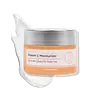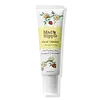What's inside
What's inside
 Key Ingredients
Key Ingredients

 Benefits
Benefits

 Concerns
Concerns

 Ingredients Side-by-side
Ingredients Side-by-side

Water
Skin ConditioningAloe Barbadensis Leaf Juice
Skin ConditioningSodium Ascorbyl Phosphate
AntioxidantIsopropyl Palmitate
EmollientHelianthus Annuus Flower
Skin ConditioningGlyceryl Stearate Se
EmulsifyingCetyl Alcohol
EmollientDimethyl Sulfone
SolventStearic Acid
CleansingGlycerin
HumectantButyrospermum Parkii Butter
Skin ConditioningSynthetic Jojoba Oil
EmollientPanthenol
Skin ConditioningTocopheryl Acetate
AntioxidantCamellia Sinensis Extract
AntioxidantXanthan Gum
EmulsifyingPhenoxyethanol
PreservativeEthylhexylglycerin
Skin ConditioningWater, Aloe Barbadensis Leaf Juice, Sodium Ascorbyl Phosphate, Isopropyl Palmitate, Helianthus Annuus Flower, Glyceryl Stearate Se, Cetyl Alcohol, Dimethyl Sulfone, Stearic Acid, Glycerin, Butyrospermum Parkii Butter, Synthetic Jojoba Oil, Panthenol, Tocopheryl Acetate, Camellia Sinensis Extract, Xanthan Gum, Phenoxyethanol, Ethylhexylglycerin
Water
Skin ConditioningAloe Barbadensis Leaf
MaskingCetearyl Alcohol
EmollientPalmitoyl Tripeptide-38
Skin ConditioningCarthamus Tinctorius Seed Oil
MaskingGlycerin
HumectantCaprylic/Capric Triglyceride
MaskingNiacinamide
SmoothingPalmitoyl Dipeptide-5 Diaminobutyroyl Hydroxythreonine
Skin ConditioningGlyceryl Stearate
EmollientIsopropyl Palmitate
EmollientPhenethyl Alcohol
MaskingCaprylyl Glycol
EmollientEthylhexylglycerin
Skin ConditioningSodium PCA
HumectantSorbic Acid
PreservativeC10-18 Triglycerides
EmollientXanthan Gum
EmulsifyingArgania Spinosa Kernel Oil
EmollientPotassium Sorbate
PreservativeResveratrol
AntioxidantCocos Nucifera Oil
MaskingCitric Acid
BufferingCamellia Sinensis Leaf Extract
AntimicrobialUbiquinone
AntioxidantEuterpe Oleracea Fruit Extract
Tocopherol
AntioxidantCamellia Sinensis Extract
AntioxidantPunica Granatum Extract
AstringentCitrus Aurantifolia Peel Extract
CleansingWater, Aloe Barbadensis Leaf, Cetearyl Alcohol, Palmitoyl Tripeptide-38, Carthamus Tinctorius Seed Oil, Glycerin, Caprylic/Capric Triglyceride, Niacinamide, Palmitoyl Dipeptide-5 Diaminobutyroyl Hydroxythreonine, Glyceryl Stearate, Isopropyl Palmitate, Phenethyl Alcohol, Caprylyl Glycol, Ethylhexylglycerin, Sodium PCA, Sorbic Acid, C10-18 Triglycerides, Xanthan Gum, Argania Spinosa Kernel Oil, Potassium Sorbate, Resveratrol, Cocos Nucifera Oil, Citric Acid, Camellia Sinensis Leaf Extract, Ubiquinone, Euterpe Oleracea Fruit Extract, Tocopherol, Camellia Sinensis Extract, Punica Granatum Extract, Citrus Aurantifolia Peel Extract
 Reviews
Reviews

Ingredients Explained
These ingredients are found in both products.
Ingredients higher up in an ingredient list are typically present in a larger amount.
Camellia Sinensis Extract is from the oil in tea plant leaves. The leaves give us various types of tea: green, black, oolong, and white.
Camellia Sinensis leaves have many benefits. It contains polyphenols, a strong antioxidant. Antioxidants help fight off free-radical molecules that damage skin cells. The antioxidants in green tea neutralize free-radicals from the sun. This gives the skin some extra UV protection, but should not replace sunscreen.
Many components of tea have anti-inflammatory and antimicrobial properties. Polyphenols and L-theanine help soothe the skin and reduce irritation. L-theanine is an amino acid that makes up most of the amino acids found in tea leaves. The caffeine in Camellia Sinensis Leaf Extract helps calm inflamed blood vessels.
Tea leaves also contain Vitamin Bs, linoleic acid, magnesium, calcium, iron, and zinc.
Research has shown both drinking Camellia Sinensis Leaf Tea and applying it to the skin can help boost skin elasticity and hydration. Studies also show using tea extract may reduce sebum, or oil, production.
Learn more about Camellia Sinensis ExtractEthylhexylglycerin (we can't pronounce this either) is commonly used as a preservative and skin softener. It is derived from glyceryl.
You might see Ethylhexylglycerin often paired with other preservatives such as phenoxyethanol. Ethylhexylglycerin has been found to increase the effectiveness of these other preservatives.
Glycerin is already naturally found in your skin. It helps moisturize and protect your skin.
A study from 2016 found glycerin to be more effective as a humectant than AHAs and hyaluronic acid.
As a humectant, it helps the skin stay hydrated by pulling moisture to your skin. The low molecular weight of glycerin allows it to pull moisture into the deeper layers of your skin.
Hydrated skin improves your skin barrier; Your skin barrier helps protect against irritants and bacteria.
Glycerin has also been found to have antimicrobial and antiviral properties. Due to these properties, glycerin is often used in wound and burn treatments.
In cosmetics, glycerin is usually derived from plants such as soybean or palm. However, it can also be sourced from animals, such as tallow or animal fat.
This ingredient is organic, colorless, odorless, and non-toxic.
Glycerin is the name for this ingredient in American English. British English uses Glycerol/Glycerine.
Learn more about GlycerinIsopropyl Palmitate is a texture enhancer and emollient. It is an ester of isopropyl alcohol and palmitic acid.
Palmitates are emollients. Emollients help keep your skin soft and smooth by creating a barrier that traps moisture in.
When added to cosmetics, Isopropyl Palmitate creates a silky texture and improves spreadability.
Isopropyl Palmitate may not be fungal acne safe. It can worsen acne prone skin.
Learn more about Isopropyl PalmitateWater. It's the most common cosmetic ingredient of all. You'll usually see it at the top of ingredient lists, meaning that it makes up the largest part of the product.
So why is it so popular? Water most often acts as a solvent - this means that it helps dissolve other ingredients into the formulation.
You'll also recognize water as that liquid we all need to stay alive. If you see this, drink a glass of water. Stay hydrated!
Learn more about WaterXanthan gum is used as a stabilizer and thickener within cosmetic products. It helps give products a sticky, thick feeling - preventing them from being too runny.
On the technical side of things, xanthan gum is a polysaccharide - a combination consisting of multiple sugar molecules bonded together.
Xanthan gum is a pretty common and great ingredient. It is a natural, non-toxic, non-irritating ingredient that is also commonly used in food products.
Learn more about Xanthan Gum